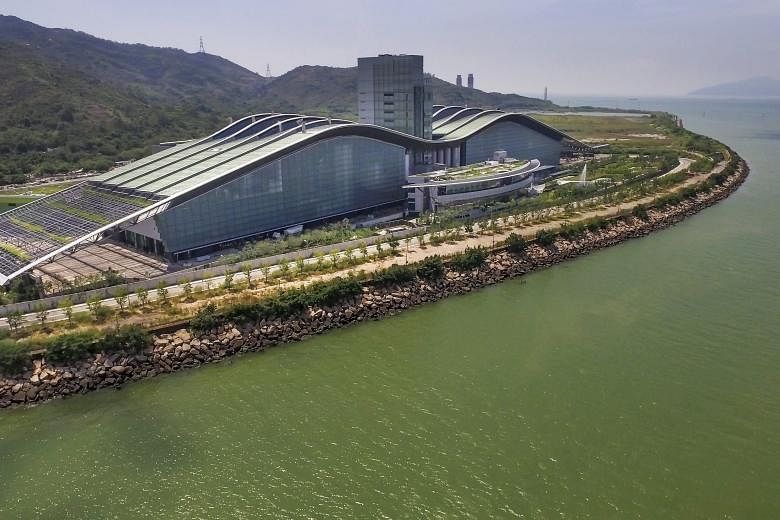HONG KONG • It is billed as a groundbreaking way to deal with Hong Kong's human waste, and even includes an onsite spa free to residents, but a new eco-friendly sludge treatment plant has not washed with some locals.
The sustainable T-Park development, a sleek low-rise building with a roof shaped like a wave, blends into coastal hills near the town of Tuen Mun in the north of Hong Kong.
Each day, the HK$5 billion (S$887 million) plant treats 1,200 tonnes of sludge from the city's wastewater treatment plants to keep it from being dumped in Hong Kong's overflowing landfills.
The plant desalinates sea water and powers itself using energy created from burning organic waste in what is the world's largest sludge incinerator.
Built by French management giant Veolia, city officials say it is "one of the most technologically advanced facilities" of its kind and will not emit pollutants.
But residents who already complain about odours emanating from a nearby landfill have protested against bringing yet more waste into the area.
And the building of a free onsite spa has been dismissed by some as rubbish.
The three mineral-infused pools in the glass-walled spa, each with a different temperature, are powered by heat from the burning sludge.
Sea water used for the pools is first desalinated at the plant and visitors can look out on ocean views as they soak themselves in the pools. They can also tour the plant as part of their trip.
"Pure water is a symbol of purity," Mr Antoine Frerot, chairman of Veolia, told Agence France-Presse during a tour of the plant by French Minister of State for Foreign Trade Matthias Fekl on Wednesday. "We can live together in a dense city without making the planet dirty."
However, Mr Cheng Wai-kwan, 49, who lives in a village close to the plant, said the spa was less than tempting. "If I tell you I have a spa near home which is powered by burning rubbish, I don't think anyone would come," he said.
He was among 40 villagers who protested at the site during the plant's official opening ceremony last week. The spa is due to open to the public next month.
Mr Cheng said hundreds of villagers living nearby were fed up with the smell of the nearby landfill, and he was worried it would get worse.
"Basically, you will have tonnes of faeces brought to our district every single day. However beautifully it is being packaged, I don't think it is benefiting us," he added.
A Tuen Mun district councillor said residents never agreed to have the plant built in their backyard. "The government is using the spa as compensation, but I don't think it's enough," said Ms Ho Hang-mui.
"Residents already have to shut their windows (because of the landfill). Even if the spa is free, I don't think people will be able to enjoy it," she added.
AGENCE FRANCE PRESSE

